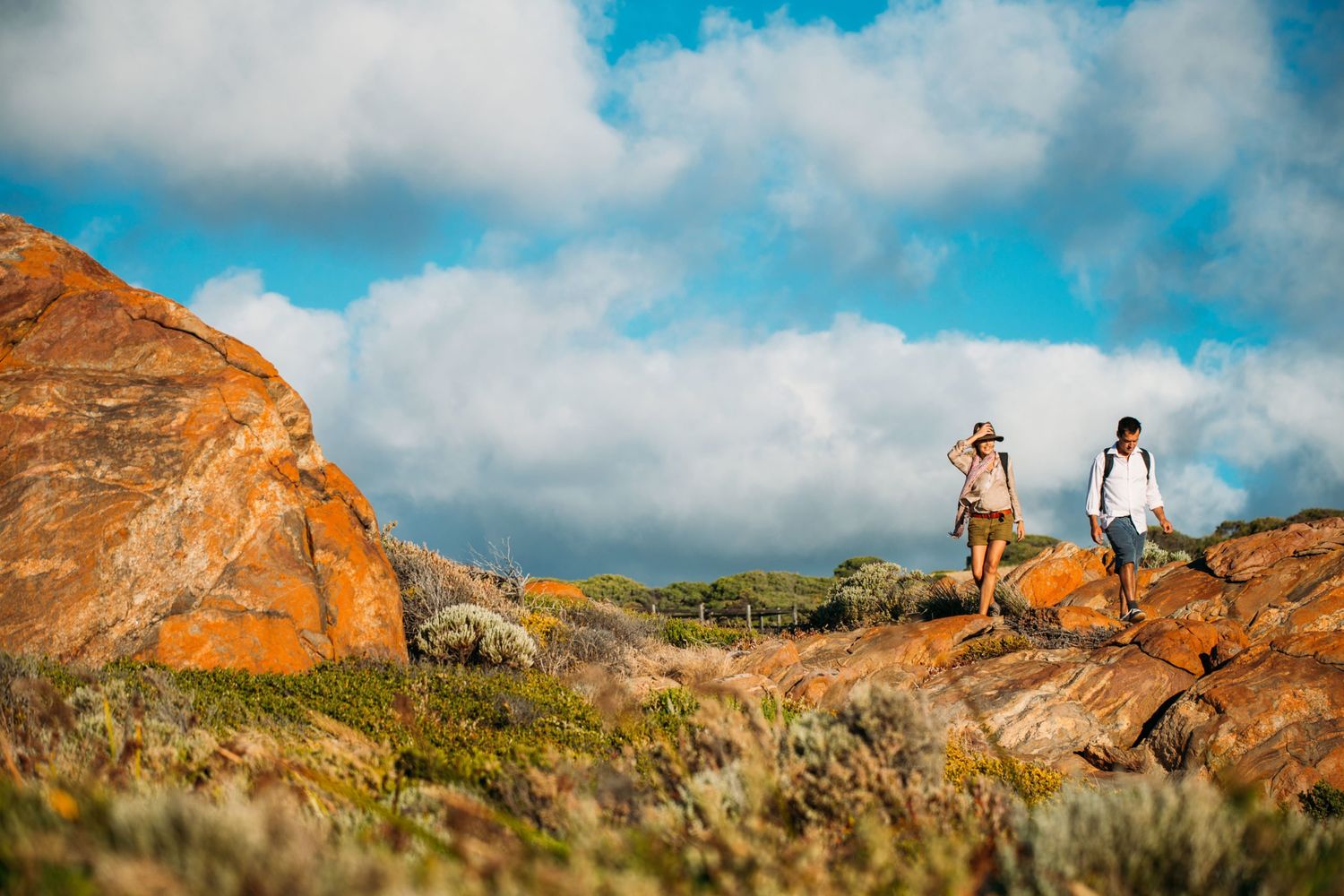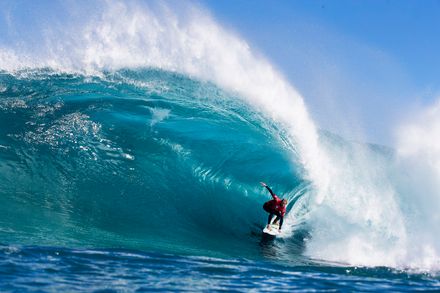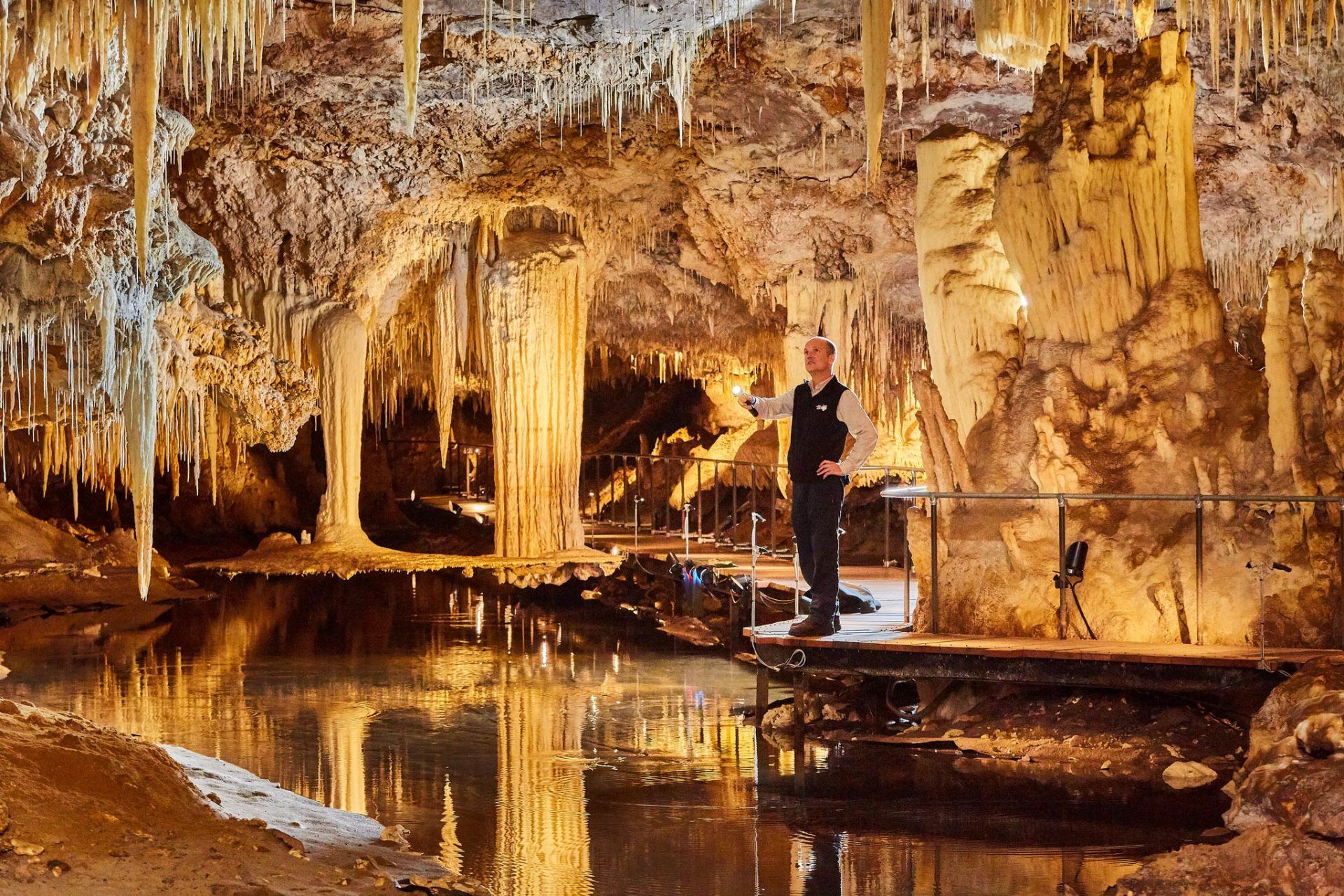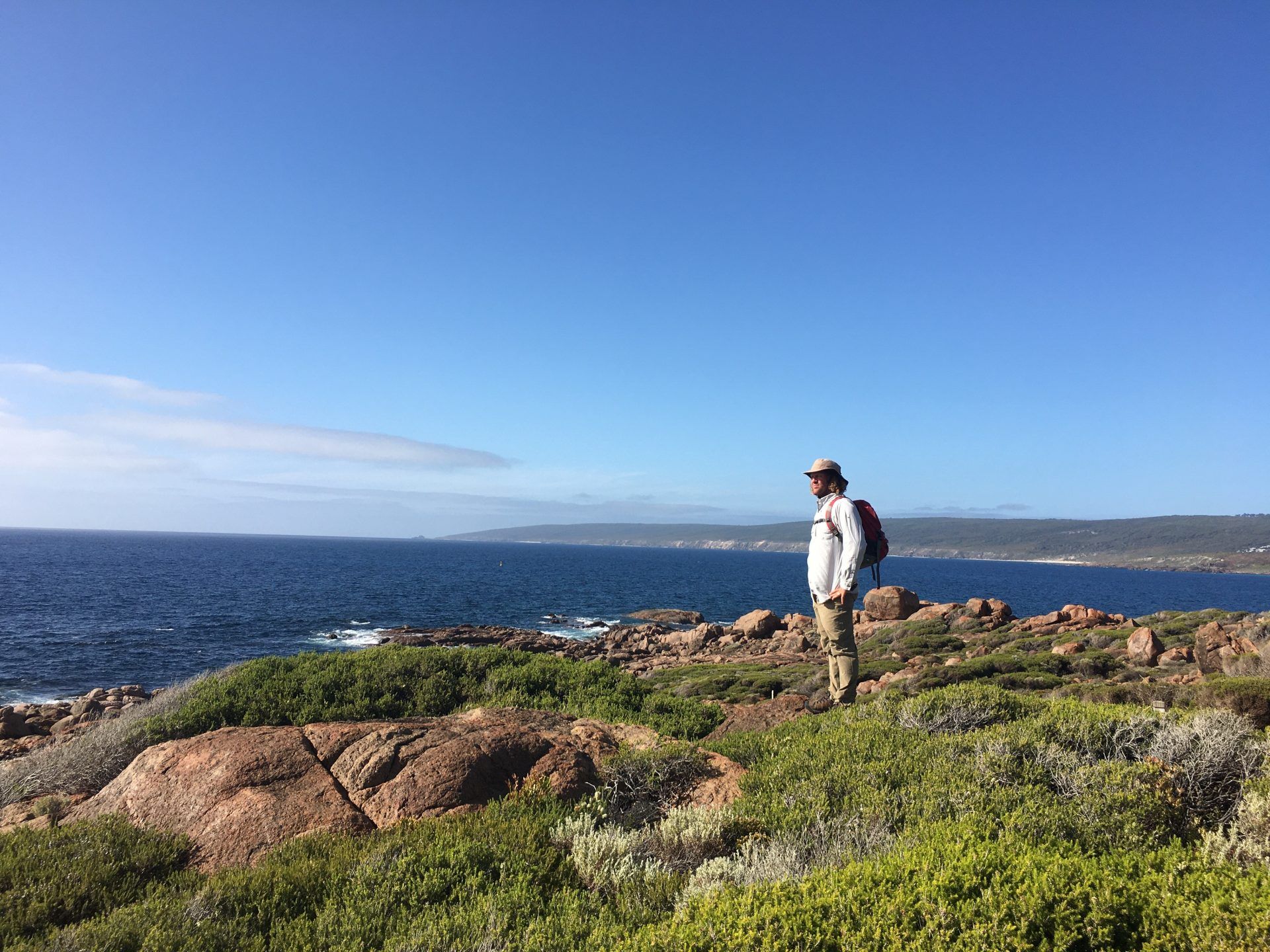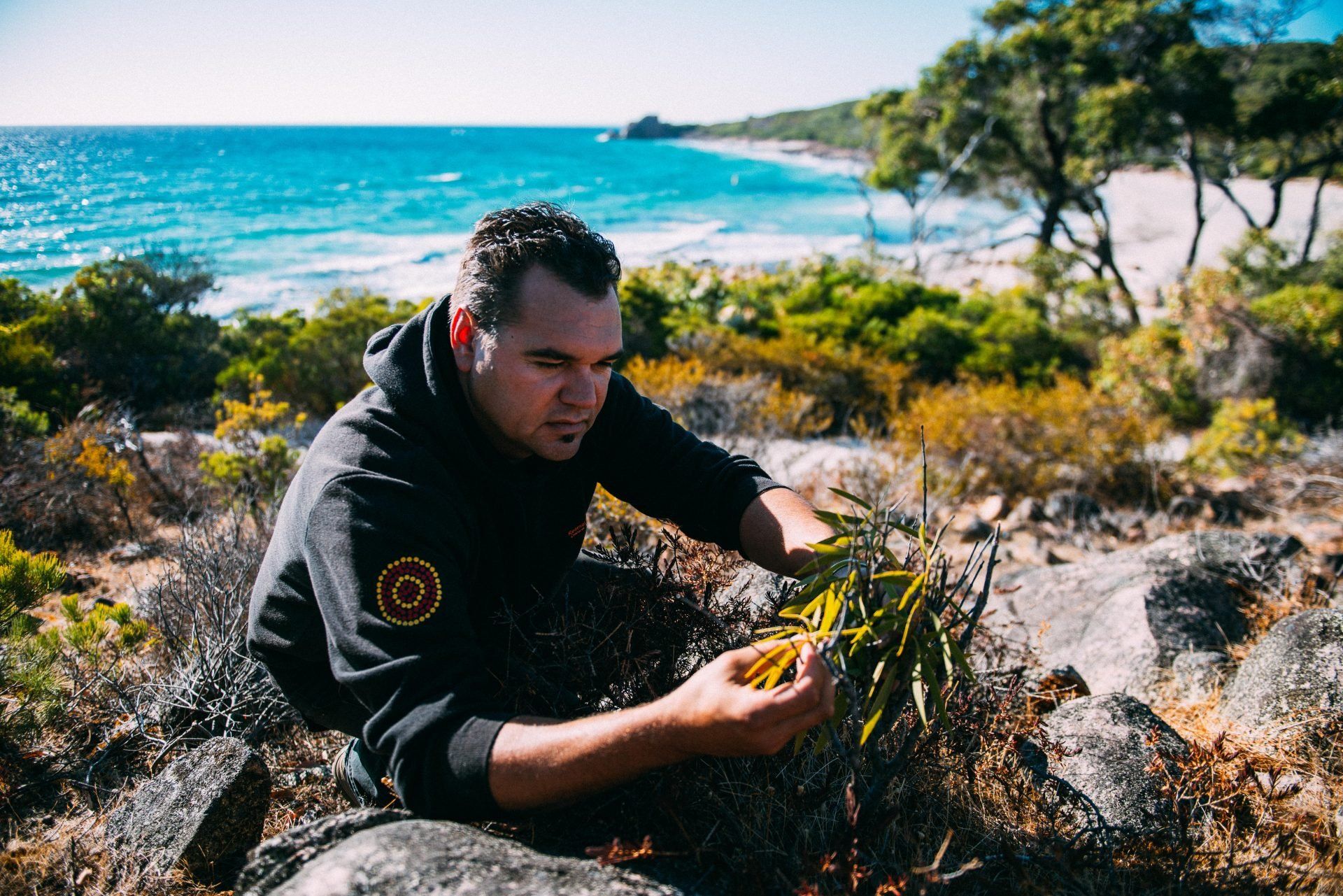“Our coast is so different to most places on earth. The texture is extremely special, it’s got corners, bays, points – that makes it special,” says Gene Hardy, whose Cape to Cape Explorer Tours specialises in guided hiking in comfort, with amazing guides who really understand the place.
Shifting continents and multiple ice ages created a unique geology. “It provided this little bubble between the Capes. An incredible canvas for recreational opportunities and activities, it gives us the caves, the waves – all the world class waves break on limestone reefs covering granite. The limestone caves give the crayfish and abalone plenty of habitat, too.”
Josh Whiteland, Wadandi cultural custodian and operator of Koomal Dreaming and Cape Cultural Tours speaks of stories handed down by his ancestors; “Aboriginal people have witnessed a lot of things over time, from changes in climate to ice ages. I work with many interesting and inspiring, positive Aboriginal people from the south to the north. I like sharing stories through tourism; it’s a great opportunity to create awareness.”
His tours take guests to remarkable places; Cape Naturaliste, Meelup Regional Park and Ngilgi Cave. “We’re pretty blessed to live where we live. I personally love the bay; I love Meelup Regional Park. The west coast in the morning and the bay in the afternoon. We’re saltwater people so I’m in the ocean every chance I get.”
“We celebrate the culture of the place by being on country and in tune with the seasons. We celebrate every couple of months the change of season, which is every two months on the Aboriginal calendar. Bunuru is one of my favourite seasons; February and March is a humid time of year, we’ve got all the marri flower, white tailed black cockatoos and migrating salmon. Lots of herring and native bees come out this time of year, and families would celebrate with gatherings along the coast, catching salmon and smoking it on the fire.”
